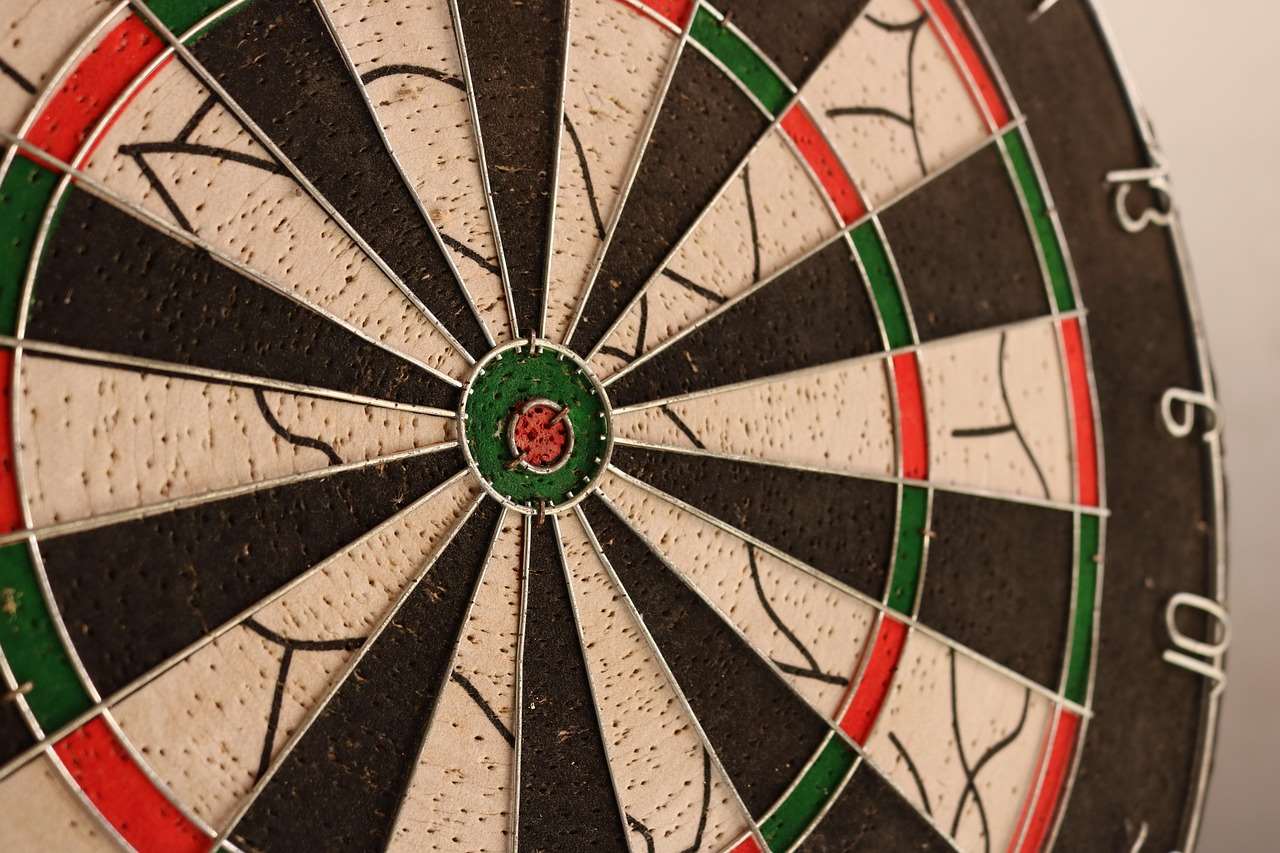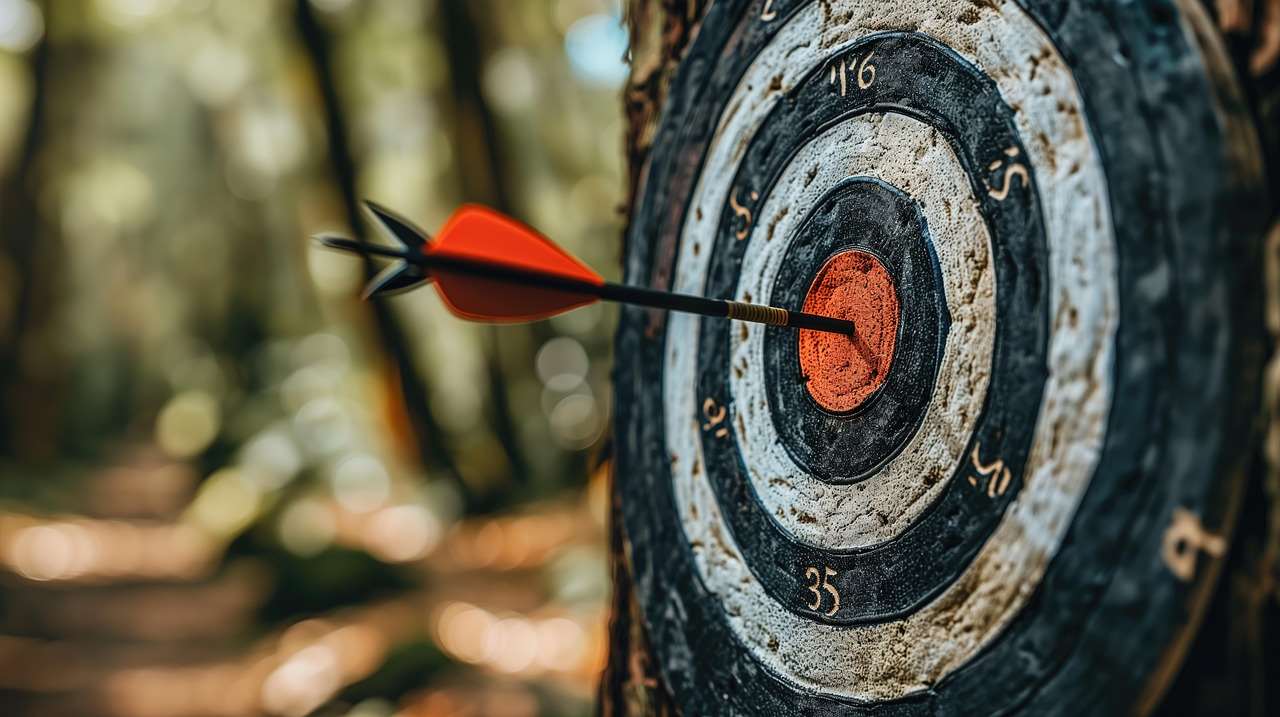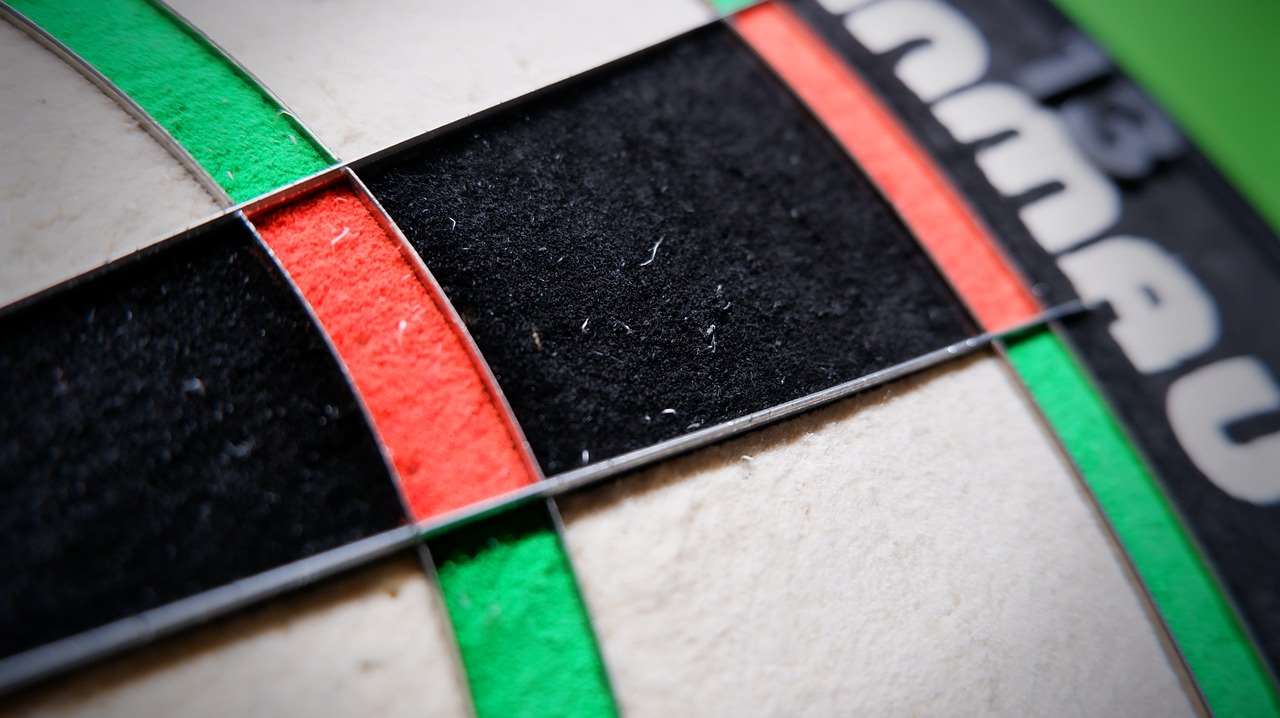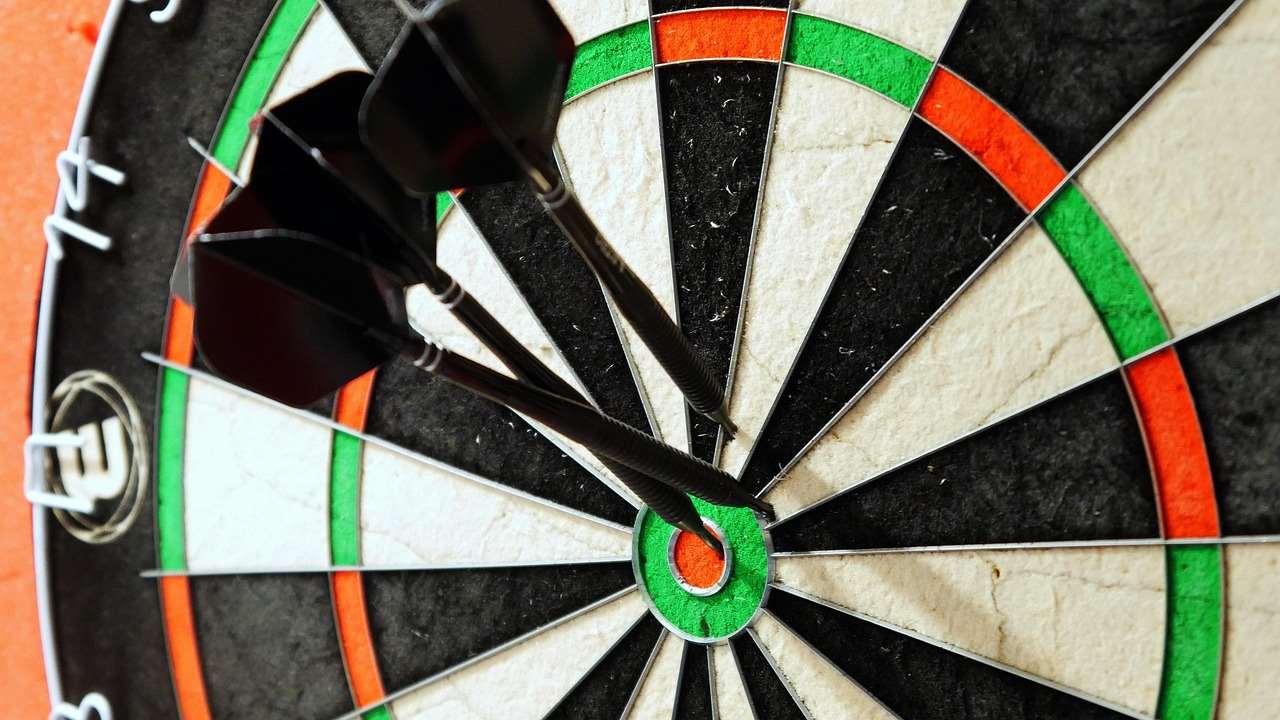The key to **how to measure oche distance on uneven floors** lies in establishing a consistent vertical reference point and ensuring the horizontal distance is accurately measured from the dartboard’s face. This article will guide you through various methods to achieve an accurate **dartboard setup**, even when dealing with uneven flooring, guaranteeing a fair and enjoyable game. We’ll cover everything from basic measurement techniques to advanced solutions for particularly challenging situations.
⚠️ Still Using Pen & Paper (Of een schoolbord)?! ⚠️
Stap in de toekomst! De Dart Teller -app behandelt alle scoren, stelt kassa voor, en volgt uw statistieken automatisch. It's easier than you think!
Probeer de Smart Dart Teller -app gratis!Klaar voor een upgrade? Klik hierboven!
Understanding the Importance of Accurate Oche Distance
Before diving into the “how-to,” let’s emphasize why proper oche distance is crucial. De oche, also known as the throwing line or toe line, defines the legal distance from which a player must throw their darts. The official distance, measured from the face of the dartboard to the front edge of the oche, is **7 feet 9 1/4 inches (2.37 meters)**. Deviating from this measurement significantly impacts gameplay.
- Fairness: An incorrect distance gives an unfair advantage to one player.
- Consistency: Practicing with an inaccurate distance can negatively affect your throwing technique when playing in official settings.
- Enjoyment: An accurately set up board contributes to a more satisfying and authentic darts experience.
Even a seemingly small difference of an inch or two can throw off your aim and disrupt your muscle memory. Taking the time to measure accurately is an investment in your game and overall enjoyment.
How to Measure Oche Distance on Uneven Floors: Step-by-Step Guide

Here’s a detailed breakdown of **how to measure oche distance on uneven floors**, focusing on techniques that overcome common challenges:
- Establish a Vertical Reference: The first step is to ensure your measurement starts from the *face* of the dartboard, not just the wall. Use a plumb bob or a laser level to create a vertical line extending from the center of the bullseye down to the floor. This line serves as your starting point for accurate measurement.
- Mark the Floor at Bullseye Level: Using the plumb bob or laser level, mark the point on the floor directly beneath the bullseye. This point represents the vertical projection of the dartboard’s center onto the floor.
- Measure Horizontally from the Marked Point: Nu, use a measuring tape to measure horizontally from the mark on the floor towards where you want to place the oche. Herinneren, the official distance is 7 feet 9 1/4 inches (2.37 meters).
- Account for Unevenness: This is where the challenge arises. If the floor is uneven, a simple horizontal measurement might be inaccurate. You need to maintain a consistent *horizontal* plane. One approach is to use a long, straight piece of wood or metal (like a level) placed on the floor between the marked point and the approximate oche location. Place a level on top of this straight edge to ensure it’s perfectly horizontal. Measure from the marked point to the straight edge, and then measure the distance from the straight edge to where the oche will be placed. Add these two measurements together to get the total horizontal distance.
- Placement of the Oche: The measured distance indicates the *front* edge of the oche. Ensure the oche is securely fixed in place once you are satisfied with the measurement.
- Double-Check the Measurement: It’s always a good idea to double-check your measurements, especially when dealing with uneven surfaces. Have someone else verify the distance to ensure accuracy.
By following these steps, you can accurately establish the oche distance even on uneven flooring, ensuring a fair and consistent playing experience.
Alternative Methods for Handling Uneven Floors
While the plumb bob and straight edge method works well, here are a couple of alternative techniques for **how to measure oche distance on uneven floors**:
- Laser Distance Measurer: A laser distance measurer can be incredibly useful. Position the laser at bullseye height (5 feet 8 inches from the floor) and aim it towards the floor. The laser will provide a direct, horizontal distance reading, regardless of floor irregularities. This method is particularly accurate and efficient.
- Digital Level with Inclinometer: A digital level with an inclinometer can measure the angle of the floor. Use this to determine the slope and calculate the necessary adjustments to the horizontal measurement. While this method requires some mathematical calculations, it can be highly precise.
The best method depends on the severity of the unevenness and the tools you have available. Don’t hesitate to experiment and find what works best for your specific situation.
Dealing with Significant Floor Slopes

Sometimes, the floor slope is so significant that simply adjusting the horizontal measurement isn’t enough. In these cases, you might need to consider more drastic measures, zoals:
- Creating a Level Platform: Building a small, level platform for the oche to sit on is an effective solution. This platform can be constructed from wood or other sturdy materials. Ensure the platform is wide enough to accommodate a comfortable stance.
- Shimming the Oche: Use shims to level the oche itself. Place shims underneath the oche until it is perfectly level. This method is suitable for minor floor imperfections.
Remember to prioritize safety. Ensure any platform or shimming is stable and secure to prevent accidents.
The Importance of Consistent Throwing Stance
Even with a perfectly measured oche distance, inconsistencies in your throwing stance can affect your accuracy. Here are some tips for maintaining a consistent stance:
- Foot Placement: Always position your feet in the same spot relative to the oche. Use visual markers on the floor to ensure consistent foot placement.
- Body Alignment: Keep your body aligned with the target. Avoid leaning too far forward or backward.
- Weight Distribution: Distribute your weight evenly between your feet for optimal balance and stability.
Practicing with a consistent throwing stance will improve your overall accuracy and consistency, regardless of the floor’s unevenness.
Remember to check out Basic Darts Fundamentals for Beginners for more tips on improving your game.
Essential Tools for Measuring Oche Distance Accurately
Having the right tools can significantly simplify the process of **measuring oche distance on uneven floors**. Here’s a list of essential tools:
- Measuring Tape: A standard measuring tape is essential for measuring the horizontal distance. Choose one that is at least 10 feet long for accurate measurements.
- Plumb Bob: A plumb bob is used to establish a vertical line. It consists of a weight suspended from a string.
- Laser Level: A laser level projects a perfectly horizontal line, making it easy to align objects and measure distances accurately.
- Straight Edge: A long, straight piece of wood or metal is used to bridge uneven surfaces and ensure a horizontal measurement.
- Level: A level is used to ensure surfaces are perfectly horizontal or vertical.
- Laser Distance Measurer: As mentioned earlier, a laser distance measurer provides a quick and accurate way to measure distances.
- Digital Level with Inclinometer: This tool measures angles and can be used to calculate slope and make necessary adjustments to measurements.
Investing in quality tools will pay off in the long run by ensuring accurate measurements and a more enjoyable darts experience. You might even explore Alternative darts rules for home play after your board is level!

Common Mistakes to Avoid When Measuring Oche Distance
Even with the best tools and intentions, it’s easy to make mistakes when measuring oche distance. Here are some common pitfalls to avoid:
- Measuring from the Wall Instead of the Dartboard Face: Always measure from the *face* of the dartboard, not the wall behind it. The thickness of the dartboard can significantly affect the accuracy of the measurement.
- Ignoring Floor Unevenness: As we’ve discussed, floor unevenness can throw off your measurements. Take the time to account for any slopes or bumps in the floor.
- Using an Inaccurate Measuring Tape: Ensure your measuring tape is accurate. Check it against a known standard to verify its accuracy.
- Failing to Double-Check Measurements: Always double-check your measurements before fixing the oche in place. It’s better to be safe than sorry.
By avoiding these common mistakes, you can ensure that your oche distance is as accurate as possible. You could even create Creative dart rules for parties and social gatherings once your dartboard setup is perfect!
Maintaining Your Oche Distance Over Time
Once you’ve accurately measured and set up your oche distance, it’s important to maintain it over time. Here are some tips for ensuring your oche remains in the correct position:
- Secure the Oche: Make sure the oche is securely fixed to the floor. Use screws, adhesive, or other appropriate fasteners to prevent it from moving.
- Regularly Check the Measurement: Periodically check the oche distance to ensure it hasn’t shifted. Use your measuring tape to verify the distance from the dartboard face.
- Address Floor Changes: If the floor settles or changes over time, you may need to readjust the oche distance.

By taking these simple steps, you can ensure that your oche distance remains accurate and consistent for years to come.
Advanced Techniques for Precise Measurement
For those seeking the utmost precision, here are some advanced techniques for **how to measure oche distance on uneven floors**:
- Using a Theodolite: A theodolite is a surveying instrument that can measure horizontal and vertical angles with extreme accuracy. This tool can be used to precisely determine the horizontal distance between the dartboard face and the oche, even on highly uneven surfaces.
- 3D Scanning: 3D scanning technology can create a detailed model of the room, including the floor and dartboard. This model can then be used to accurately measure the distance between the dartboard face and the oche.
These techniques are typically used by professionals and are not necessary for most home setups. Echter, they demonstrate the lengths to which accuracy can be taken. You may also find tips on Adapting darts rules for small spaces: tips and tricks useful for your setup.
You might even consider How to make darts fairer with handicap rules so everyone can enjoy playing on your perfectly measured dartboard.
Optimizing Your Darts Setup for Uneven Floors

Beyond just measuring the oche distance, here are some final tips for optimizing your darts setup on uneven floors:
- Ensure Adequate Lighting: Proper lighting is essential for accurate aiming. Position your lights to minimize shadows and glare.
- Use a Dartboard Surround: A dartboard surround protects the wall from stray darts and provides a visual backdrop.
- Consider a Dart Mat: A dart mat can provide a comfortable and consistent throwing surface. Choose a mat that is durable and easy to clean.
By taking these extra steps, you can create a comfortable and enjoyable darts playing experience, even on uneven floors.
Conclusie: Achieving Dartboard Perfection on Any Surface
Mastering **how to measure oche distance on uneven floors** is essential for creating a fair and enjoyable darts experience. By using the techniques outlined in this article, you can overcome the challenges of uneven flooring and establish an accurate and consistent oche distance. Remember to prioritize accuracy, use the right tools, and maintain your setup over time. Now that you know **how to measure oche distance on uneven floors**, grab your darts and start practicing! And if you are new to darts then also find some Adapting darts rules for beginners to make learning easier.
Hoi, Ik ben Dieter, En ik heb Dartcounter gemaakt (Dartcounterapp.com). Mijn motivatie was geen darts -expert - helemaal tegenovergestelde! Toen ik voor het eerst begon te spelen, Ik hield van het spel, maar vond het moeilijk en afleidend om nauwkeurige scores te houden en statistieken te volgen.
Ik dacht dat ik niet de enige kon zijn die hiermee worstelde. Dus, Ik besloot om een oplossing te bouwen: een eenvoudig te gebruiken applicatie die iedereen, Ongeacht hun ervaringsniveau, zou kunnen gebruiken om moeiteloos te scoren.
Mijn doel voor Dartcounter was eenvoudig: Laat de app de nummers afhandelen - het scoren, de gemiddelden, de statistieken, Zelfs checkout suggesties - zodat spelers puur kunnen richten op hun worp en genieten van het spel. Het begon als een manier om het probleem van mijn eigen beginners op te lossen, En ik ben heel blij dat het is uitgegroeid tot een nuttig hulpmiddel voor de bredere darts -community.